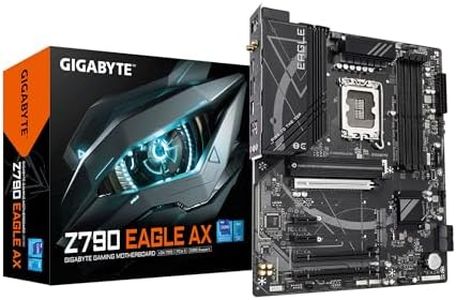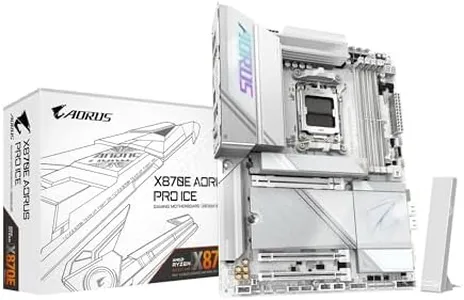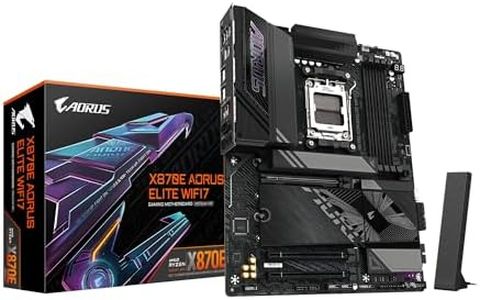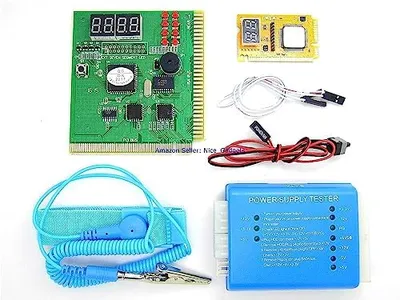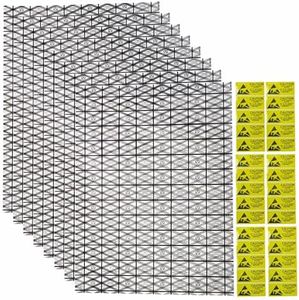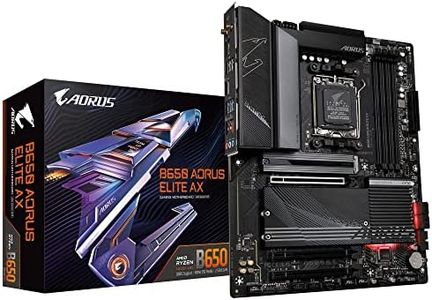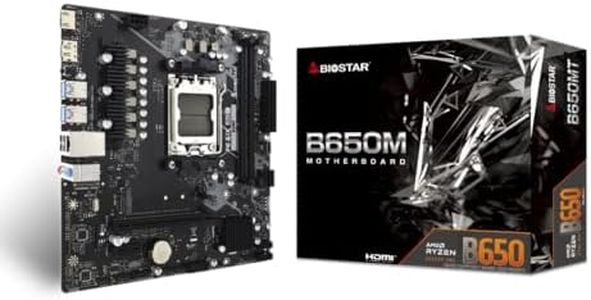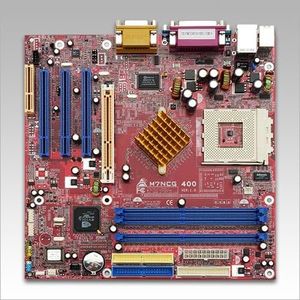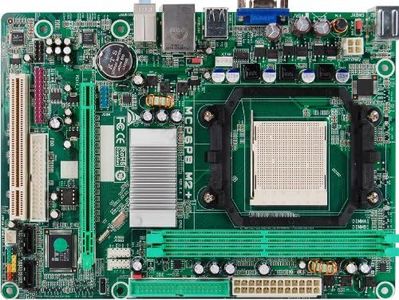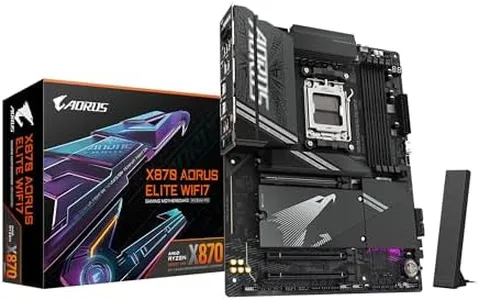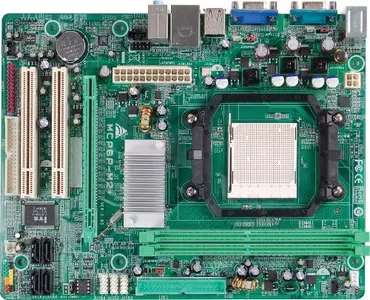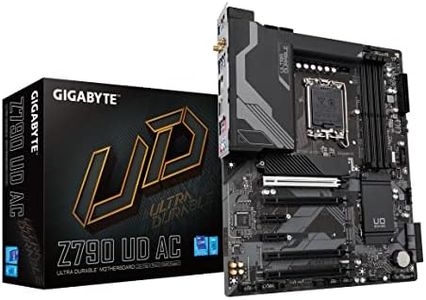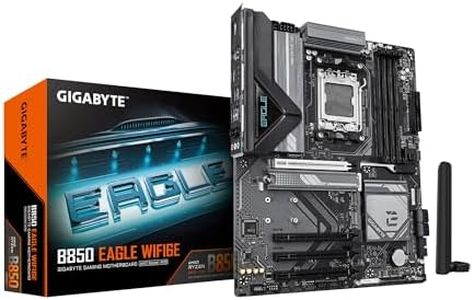10 Best Motherboards 2025 in the United States
Our technology thoroughly searches through the online shopping world, reviewing hundreds of sites. We then process and analyze this information, updating in real-time to bring you the latest top-rated products. This way, you always get the best and most current options available.

Our Top Picks
Winner
GIGABYTE Z790 Eagle AX LGA 1700 Intel Z790 ATX Motherboard with DDR5, M.2, PCIe 5.0, USB 3.2 Gen2X2 Type-C, Intel Wi-Fi 6E, 2.5GbE LAN, Q-Flash Plus, EZ-Latch
Most important from
424 reviews
The GIGABYTE Z790 Eagle AX is a solid ATX motherboard designed for users looking to build a high-performance Intel-based PC. It supports the latest Intel 14th and 13th Gen processors with the LGA 1700 socket, giving you access to cutting-edge CPU options. The board uses the Intel Z790 chipset, which is well-suited for gaming and productivity tasks. It supports DDR5 memory with four RAM slots, allowing up to 128 GB officially, with a maximum capacity of 256 GB, so you have plenty of room for fast and future-proof memory.
For expansion, it offers PCIe 5.0 slots, which is great for next-gen graphics cards and fast add-on cards. Storage options include multiple M.2 slots with thermal guards, helping keep your SSDs cool during heavy use. Connectivity is extensive, featuring USB 3.2 Gen 2x2 Type-C for very fast data transfer, Intel Wi-Fi 6E for strong wireless connections, and a 2.5GbE LAN port for reliable wired networking. The onboard power design and thermal solutions are robust, ensuring stable performance under load. Features like Q-Flash Plus and EZ-Latch make BIOS updates and CPU installation easier, which is helpful for non-expert builders.
DDR5 memory is still relatively expensive, and this motherboard might be more than necessary if you're not planning to use high-end CPUs or need the fastest PCIe 5.0 slots. Additionally, as an ATX board, it requires a compatible mid to full tower case. This motherboard is well suited for gamers, creators, or anyone wanting a future-ready Intel build with top-tier connectivity and upgrade paths.
Most important from
424 reviews
GIGABYTE X870E AORUS PRO ICE AMD AM5 LGA 1718 Motherboard, ATX, DDR5, 4X M.2, PCIe 5.0, USB4, WIFI7, 2.5GbE LAN, EZ-Latch, 5-Year Warranty
Most important from
960 reviews
The GIGABYTE X870E AORUS PRO ICE is a solid ATX motherboard designed for AMD's latest Ryzen 7000, 8000, and 9000 series processors using the AM5 socket. It supports DDR5 RAM with four slots, allowing up to 256GB at speeds up to 5600 MHz, which is great for future-proofing and handling demanding tasks. The X870E chipset offers advanced features like PCIe 5.0, which ensures faster data transfer for new graphics cards and storage devices.
Regarding storage, it includes four M.2 slots for SSDs, providing plenty of fast storage options. Connectivity is strong with dual USB4 ports, front and rear USB-C, WiFi 7 for fast wireless networking, and a 2.5GbE LAN port, covering most modern needs. The board also features enhanced thermal controls for stability and an EZ-Latch design to make CPU installation easier.
This motherboard is positioned in a relatively high price range and, while it supports cutting-edge technology, it may exceed the needs of casual users. The BIOS/UEFI interface is powerful but might present a learning curve for beginners. It is well suited for gamers, content creators, and anyone looking to build a high-performance AMD system with future-ready connectivity and expansion options.
Most important from
960 reviews
Biostar N68S3B Socket AM3 MCP68S DDR3 A&V&L MATX Motherboard
Most important from
1 reviews
The Biostar N68S3B is a micro-ATX motherboard designed for older AMD Socket AM3 processors like the Phenom II and Athlon II series. It supports up to 8GB of DDR3 RAM across two slots, which is sufficient for basic computing tasks but may be limiting for memory-intensive applications today. This board features an nVidia MCP68S chipset, offering decent stability but lacking modern features found in newer boards. Expansion options include one PCI-Express x16 slot for a graphics card and one standard PCI slot, suitable for adding extra cards like sound or network adapters, though it does not support multiple GPUs or very high-end graphics setups.
For storage, there are two SATA2 ports with RAID 0 and 1 support, allowing basic data redundancy or speed improvements, although the SATA2 interface is slower compared to current standards. Connectivity includes eight USB 2.0 ports, PS/2 ports for older keyboards or mice, a VGA video output (without HDMI or DisplayPort), and a standard Gigabit Ethernet controller. These features cover essential connections but lack modern USB 3.0 or faster networking options. Audio is handled by a VIA 6-channel HD codec, providing decent sound for everyday use.
This motherboard is best suited for budget builds or upgrading older systems rather than building a new, high-performance PC. Its BIOS/UEFI features are basic, reflecting its age. The Biostar N68S3B is a solid choice for those needing a simple, reliable board for legacy AMD processors but who can accept limitations in expandability, connectivity speed, and modern features.
Most important from
1 reviews
Buying Guide for the Best Motherboards
Choosing the right motherboard is crucial for building a computer that meets your needs. The motherboard is the main circuit board that connects all the components of your computer, so it needs to be compatible with your other hardware and support the features you want. When selecting a motherboard, consider the type of processor you plan to use, the amount of memory you need, and the expansion options for future upgrades. Here are some key specifications to consider when choosing a motherboard.FAQ
Most Popular Categories Right Now
